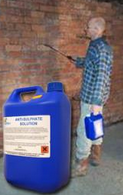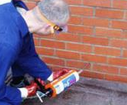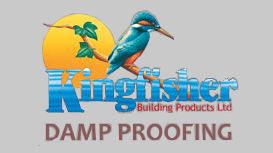About the Business
Damp proofing, at its simplest, involves taking measures to prevent walls from drawing water up from the ground (Rising damp) through sponge action. Modern buildings are constructed with a Damp Proof Course (DPC) sandwiched between the bricks around the perimeter of the house just above the foundations.
This damp course acts as a a physical barrier and prevents damp from rising up the walls. However, many older buildings unfortunately never had damp courses or the materials used have since broken down, allowing dampness to pass through.
This is where a chemical DPC (Damp Proof Course) comes in. In simple terms holes are first bored into the wall after which a chemical fluid is pumped in, which reacts with the moisture to form a permanent water barrier.
Kingfisher building Products stock a range of damp proofing products; everything from chemical damp proof injection fluids and creams, to DPC plasters and renders to drills, injection pumps and nozzles.
Business Services

Salt Contamination
Soluble salts in external masonry or areas where damp occurs can lead to staining and damage. Water seeps into unsealed stonework and masonry, then any salts dissolved within the damp areas will form crystals as the moisture dries. This often leads to the salts being deposited of the surface of the masonry as visible stains and build ups known as efflorescence. In many cases the crystallisation is also occurring within small cracks and pores beneath the surface as well which can cause serious damage over time and can result in the surface crumbling away.

Rising Damp
Rising Damp is water that soaks into the foundations of a building. This water then rises up through the walls. If the wall does not have a damp proof course or an existing one has failed then this water will continue to rise and will become visible through damage to internal walls.
Location & Hours

Cooper Lane
Ulverston, LA12 9RA


